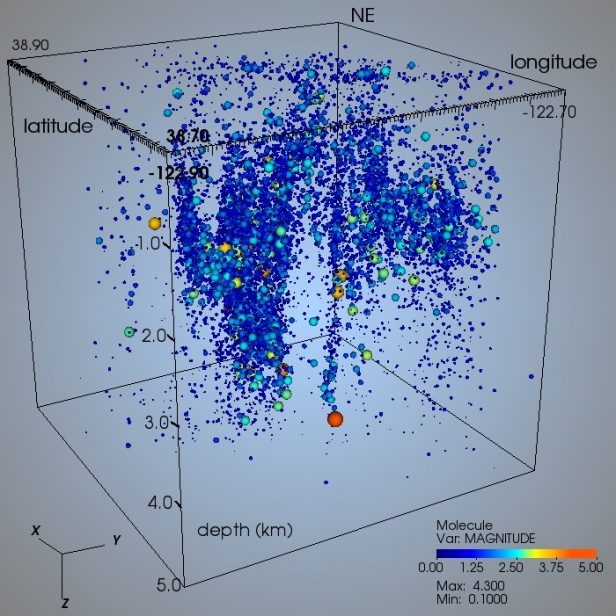 Photo: Martin LuffI don’t mean to alarm you, but the 4.7 magnitude temblors felt last Sunday in Arkansas, part of a recent “swarm” of earthquakes in the area, could be just a prelude to something much more devastating. The threat would be lessened if oil and gas companies are barred from injecting post-fracking wastewater into the earth, but — surprise! — that has yet to happen.
Photo: Martin LuffI don’t mean to alarm you, but the 4.7 magnitude temblors felt last Sunday in Arkansas, part of a recent “swarm” of earthquakes in the area, could be just a prelude to something much more devastating. The threat would be lessened if oil and gas companies are barred from injecting post-fracking wastewater into the earth, but — surprise! — that has yet to happen.
Arkansas once had an earthquake so big it caused the Mississippi river to run backwards. Just sayin’: Arkansas is home to a bunch of faults, including one not far from the site of the most recent shaking. Two hundred years ago, one of these faults caused a series of quakes so gigantically devastating that they caused the Mississippi river to temporarily reverse direction, says National Geographic:
“This is a very, very dangerous [area] at risk of earthquake,” Al-Shukri said. “When you talk about [magnitude] 7 and plus, this is going to be a major disaster.”
Such a quake would affect Little Rock and neighboring states such as Tennessee and Mississippi, Al-Shukri said.
Even if a devastating but entirely natural quake occurred in the area, the extensive gas pipeline infrastructure criss-crossing the state would be at risk:
Rebecca Virden, a spokesperson for CenterPoint Energy Inc., which owns Arkla, said Wednesday that the company worked closely with public officials to prepare response plans for earthquakes and other natural disasters.
Pipes are “all over the place,” Virden said. “We, CenterPoint Energy, or someone else has a pipeline everywhere.”
Earthquakes aren’t just a side effect; they’re literally how the process of fracking for natural gas works: Fracking, or hydraulic fracturing, requires that you inject fluid at high pressure deep into rocks in order to split them asunder. The micro-earthquakes this process causes are how you know it’s working. Generally, they’re too slight for anyone to feel. The United States Geological Survey doesn’t think the production wells used for fracking in the Arkansas are causing the most recent large earthquakes. Rather, they think the problem is “re-injection” wells, in which fracking wastewater is forced under pressure into the ground beneath small towns.
Gee, where have we heard of this before? Oh right, it’s a huge problem in Europe: In Switzerland and Germany, efforts to use hydraulic fracturing to crack open the earth in order to create below-ground heat exchangers suitable for use as reservoirs of hot water for geothermal power production have caused tons of earthquakes, many severe enough to halt production altogether.
On December 8, 2006, Markus Häring caused some 30 earthquakes — the largest registering 3.4 on the Richter scale — in Basel, Switzerland. Häring is not a supervillain. He’s a geologist, and he had nothing but good intentions when he injected high-pressure water into rocks three miles below the surface, attempting to generate electricity through a process called enhanced geothermal.
If you want to know what an earthquake “swarm” looks like, the USGS has provided this helpful graphic: This isn’t a conventional earthquake swarm, but it is a three-dimensional image of all the earthquakes that happen under The Geysers, a site of geothermal power generation and fluid re-injection in California. So pretty! Mother earth: awesome in her power… to DESTROY!




